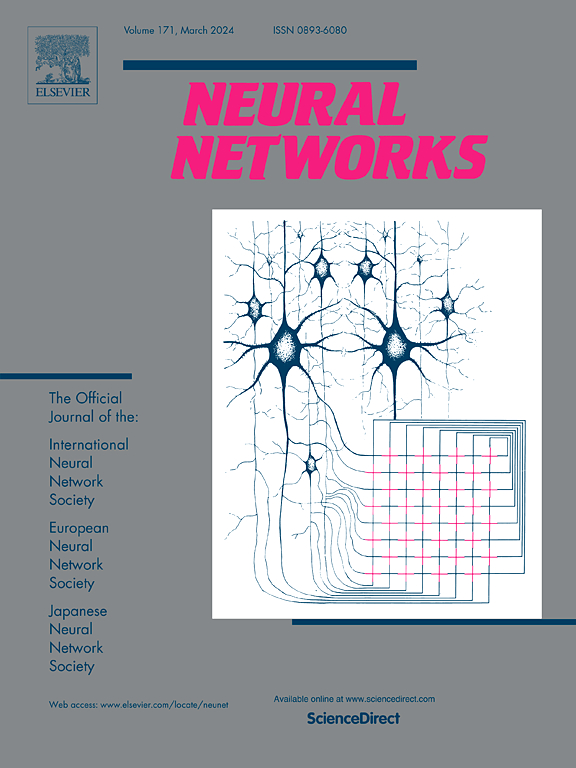用于高光谱异常检测的字典训练注意力约束低等级稀疏自动编码器
IF 6
1区 计算机科学
Q1 COMPUTER SCIENCE, ARTIFICIAL INTELLIGENCE
引用次数: 0
摘要
事实证明,字典表示法和深度学习自动编码器(AE)模型在高光谱异常检测中非常有效。字典表示法可提供自解释性,但在复杂场景中却显得力不从心。相反,自动编码器可以捕捉复杂场景中的细节,但缺乏自我解释能力。复杂场景通常涉及大量空间信息,因此空间信息的利用在高光谱异常检测中至关重要。为了有效结合两种方法的优势,解决空间信息利用不足的问题,我们提出了一种用于高光谱异常检测的注意力受限低阶稀疏自动编码器。该模型包括两个编码器:一个是使用背景字典训练的注意力受限低阶自动编码器(AClrAE),其中包含一个全局自注意模块(GAM),专注于全局空间信息,从而改进了背景重建;另一个是使用异常字典训练的注意力受限稀疏自动编码器(ACSAE),其中包含一个局部自注意模块(LAM),专注于局部空间信息,从而增强了异常重建。最后,为了合并两个编码器的检测结果,采用了非线性融合方案。在多个真实和合成数据集上的实验证明了所提方法的有效性和可行性。本文章由计算机程序翻译,如有差异,请以英文原文为准。
Dictionary trained attention constrained low rank and sparse autoencoder for hyperspectral anomaly detection
Dictionary representations and deep learning Autoencoder (AE) models have proven effective in hyperspectral anomaly detection. Dictionary representations offer self-explanation but struggle with complex scenarios. Conversely, autoencoders can capture details in complex scenes but lack self-explanation. Complex scenarios often involve extensive spatial information, making its utilization crucial in hyperspectral anomaly detection. To effectively combine the advantages of both methods and address the insufficient use of spatial information, we propose an attention constrained low-rank and sparse autoencoder for hyperspectral anomaly detection. This model includes two encoders: an attention constrained low-rank autoencoder (AClrAE) trained with a background dictionary and incorporating a Global Self-Attention Module (GAM) to focus on global spatial information, resulting in improved background reconstruction; and an attention constrained sparse autoencoder (ACsAE) trained with an anomaly dictionary and incorporating a Local Self-Attention Module (LAM) to focus on local spatial information, resulting in enhanced anomaly reconstruction. Finally, to merge the detection results from both encoders, a nonlinear fusion scheme is employed. Experiments on multiple real and synthetic datasets demonstrate the effectiveness and feasibility of the proposed method.
求助全文
通过发布文献求助,成功后即可免费获取论文全文。
去求助
来源期刊

Neural Networks
工程技术-计算机:人工智能
CiteScore
13.90
自引率
7.70%
发文量
425
审稿时长
67 days
期刊介绍:
Neural Networks is a platform that aims to foster an international community of scholars and practitioners interested in neural networks, deep learning, and other approaches to artificial intelligence and machine learning. Our journal invites submissions covering various aspects of neural networks research, from computational neuroscience and cognitive modeling to mathematical analyses and engineering applications. By providing a forum for interdisciplinary discussions between biology and technology, we aim to encourage the development of biologically-inspired artificial intelligence.
 求助内容:
求助内容: 应助结果提醒方式:
应助结果提醒方式:


